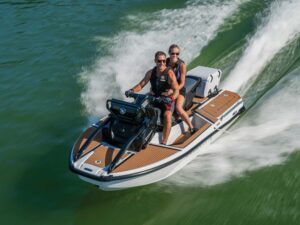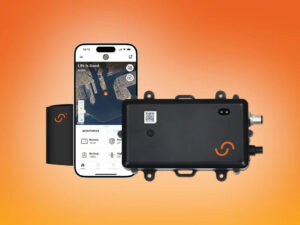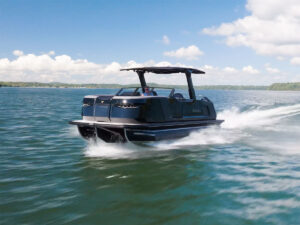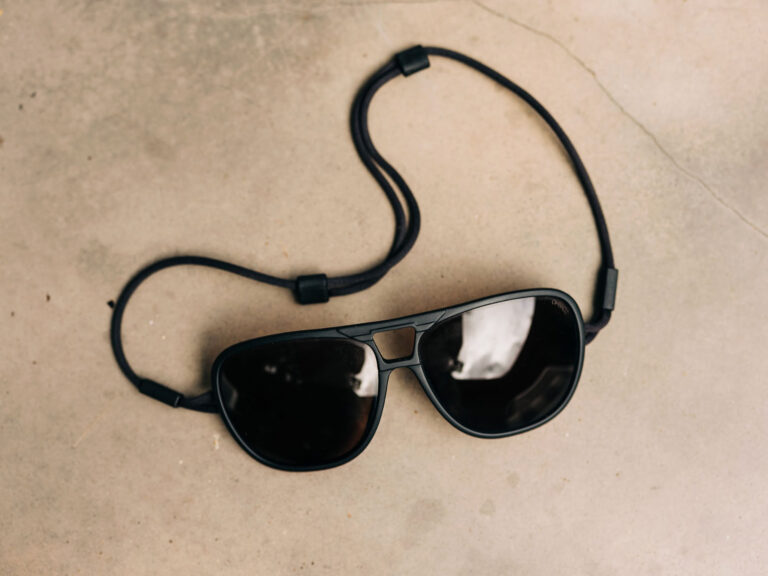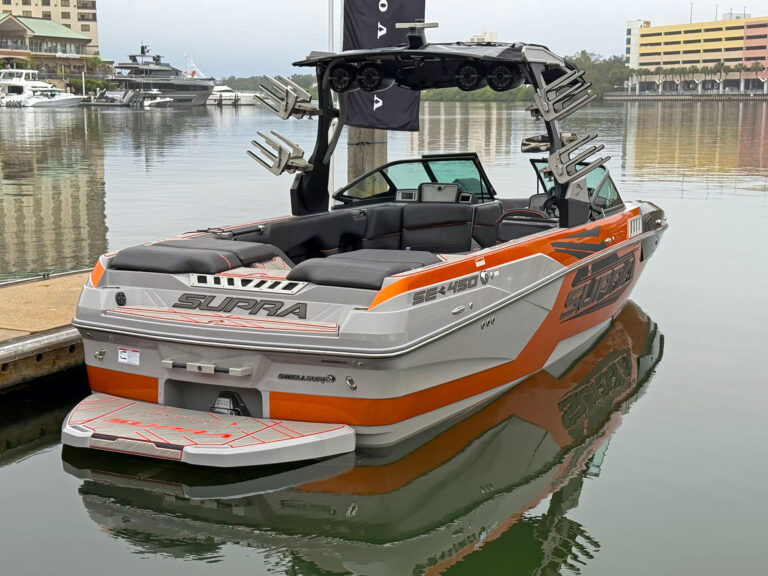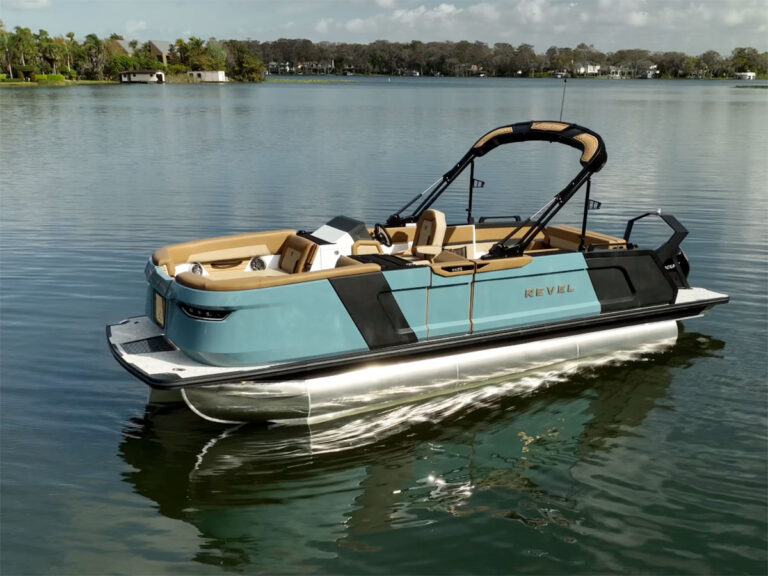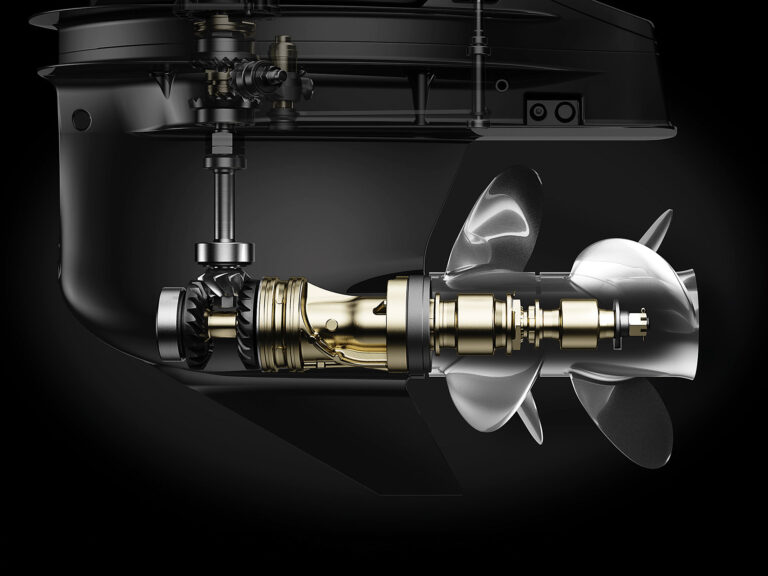
In 2008, the Unsinkable Legend was celebrating its 50th anniversary. It was a waypoint in an evolutionary journey of design and engineering that changed the course of boating and boatbuilding. But some will say what Boston Whaler has done in the past 10 years is more revolutionary yet.
Whaler has been on the spear point of change since the beginning. Sixty years ago, nobody believed a boat was unsinkable until the founder sawed a Whaler in half and, dressed in a bow tie and tweed suit, cruised it conspicuously around the country. Boatbuilders tried to imitate Boston Whaler, but thanks to the company’s patented molding process, nobody ever pulled it off.
In the founding years, Whaler’s success was built on a reputation of rugged seaworthiness nobody else could offer. Then the demands of boaters changed. Tournament participation required more rod holders, fish boxes and livewells to carry bait. Electronic navigation devices required more spacious dashboards. Growing families with competing boating activities wanted more luxury seating, more onboard comforts and more versatile features to broaden the family boat’s activities. Whaler was on a growth tear.
Then boaters began to want a new level of luxury and quality, not just a vessel with power and a dozen or so bolt-on accessories. Whaler engineers began to refine their designs with the same critical eye of luxury that sports-car designers are tasked with, smoothly blending multiple technologies into luxurious, high-performance investment-quality vessels.
Many patents were awarded to Boston Whaler in its three-phase endeavor to compete with the cacophony of upstart boat brands. On the occasion of its 60th anniversary, we highlight the 20 that have kept Whaler at the point of the armada.
1957-1979: The Founding Firsts
Boston Whaler has had dozens of firsts over its successful decades, and many of the designs from these early years are epic, collectible and still operational today.
1957: The Start of Unsinkable
Boston Whaler launched its unsinkable line of boats with its signature Unibond construction the very year Sputnik began circling Earth, pinging its taunt to America. Just as Sputnik created a sense of urgency to enter the race for the moon, Boston Whaler’s patented fiberglass molding process created a hull so solid and so unsinkably safe, it sent competitive boatbuilders scurrying for an alternative. They needed an alternative because Whaler patented its process. It was just the first “first” in Whaler’s innovative history. The builder has updated and upgraded its Unibond process many times over its 60-year history.

1961: Behold, the Center-Console
The 17-foot Nauset was a logical expansion of the principles employed in the first 13-foot Whaler. In an era when wooden boats were still en vogue and fiberglass was barely known, Whaler blended the warmth of a mahogany center console and aft seat to the durability and unsinkability of its Unibond hull. It was ideal for its era. It was perfectly powered with available motors from Evinrude and Mercury, and with its first-ever center console perfectly balancing the boat’s center of gravity, it became the design to copy in years to come.

1970: Public Outrage
Once the 17 took hold, horsepower offerings began to grow from 75 horsepower to 175 while automobiles were being downsized. That year, AMC introduced the Gremlin, but Boston Whaler introduced its first 21-foot center-console and called it the Outrage. It too retained the nostalgic look of wood, but only in the center console. Its unsinkable Unibond construction and characteristic proud chines offered boaters more safety and range, and the ability to expand their fishing boundaries.

1974: The Bestseller
Gasoline was 42 cents a gallon when Whaler brought out the first Montauk. It bore the same bold lines, proud chines for stability, and the by-now coveted Boston Whaler brand plate. Unlike the Chevy Vega revealed that same year, the Montauk was reliable, tough and beautiful. It achieved cult status almost before the Unibond polymers began to cool in the mold. Still sporting beautiful mahogany brightwork, they would turn up across the USA, even plying popular fishing waters in the Ozarks, and pilot many successful couples through opening days of a lifelong romance. Now 44 years later, it remains one of the bestselling center-consoles.

1979: Introducing the V-Bottom
Bob Dougherty thought it was about time to introduce a V-bottom boat, a departure from the shallower draft hulls. The Outrage V20 was a softer-riding, wave-cleaving model that still employed the super-safe Unibond construction. Even better, a new running surface gave a softer ride without sacrificing the coveted Whaler stability. Like the Sony Walkman introduced that year to set the stage for personal music and the iPod, the V20’s popularity resulted in a new line of smooth-riding Whalers, equipped for day boating and serious fishing.
1986-1997: The Years of Expansion
First came the firsts, then came the growth. Not just in the company, but in the products it was making. Bigger, faster, flashier, fishier — this era was all about reaching the next level.

1986: The Full Cabin
The very year Ferris Bueller’s Day Off opened in theaters and became a cult classic, Boston Whaler’s new 27 Full Cabin opened in showrooms around the country. It was powered by dual 200-horsepower outboards mounted on the relatively new idea of transom brackets for better performance. Had Whaler’s successful 27 come out a year earlier, Ferris Bueller may have had to pause a moment and ask himself, “Ferrari or Whaler? Whaler or Ferrari?”

1988: Making Mischief
The year CDs first outsold vinyl records, families were looking for second boats to fill the extra slip at the family dock. The Mischief 15 came only in red, from keel to gunwale, including vinyl and carpet. This was a racy look riding atop Whaler’s Unibond hull with proud chines. Since Miami Vice was at the pinnacle of its popularity, why not build a little something speedy? Whaler-style, it had beautiful hardware, like grab rails, an integrated ladder and bucket seats. It was speedy and nimble on a 70-horsepower Mercury.

1992: Jet Power
The Space Shuttle Endeavor made its maiden flight, propelling seven astronauts into orbit on engines that worked on principals somewhat similar to Whaler’s new Rage Jet Boat. Powerful thrust is generated by compressing a plume of pressurized water through a nozzle. The result was a boat that would accelerate to full speed in a few seconds, turn on a dime, and bring a thousand laughs and giggles to family boaters.

1997: Fishing First
Boston Whaler introduced the Conquest, a 23-foot walkaround boat the same year J.K. Rowlings published Harry Potter and the Philosopher’s Stone. The Conquest boasted a locking electronics box on the helm station and one of the first foldaway transom bench-style seats astern. Upon its launch, Boating wrote that the Conquest was “a relatively common-looking fishing boat,” but once it found some waves, “common will be the furthest thing from your mind.” For both Rowlings’ readers and Whaler fans, both introductions launched a franchise of popularity that persists today.
2004-Present: The Years of Refinement
After 50 years of innovations, Boston Whaler’s product line satisfied such a complete range of boaters’ appetites, Boston Whaler turned to making them more durable, far more luxurious, and most of all, more timeless in appeal. Though the greatest innovations of this period were often intangible, like artificial intelligence, Boston Whaler brought luxury and convenience assets to its boats that customers could see, touch and enjoy in a way that makes boating a very smart investment. To marine enthusiasts, there is little doubt that the Whalers of this era will be not only collectible in 25 years, but they’ll also be fully functional and ready to continue the adventures of boating.

2004: Survey Says…
Seven years later, the National Marine Manufacturers Association, the largest association of recreational boat and accessory manufacturers in the world, launched the Customer Satisfaction Index survey and awards. That program was the beginning of a period of self-introspection among marine manufacturers designed to find the flaws in their own products and make them better. Trouble for the competition was that Whaler was already on its game, earning an inaugural CSI Award and continuing to do so every year after that.

2008: Still Unsinkable
The year Elon Musk invented the Tesla Roadster, Boston Whaler applied its Unibond construction to the largest Whaler yet, the 345 Conquest. It was an incredible accomplishment for boating and Whaler. For the first time ever, a recreational boat this size was completely unsinkable, and it effectively blended fishability with luxury by employing top-shelf rigging stations, livewells and convertible seating to transform the fishing machine into a luxury dinner cruiser at the end of the day.
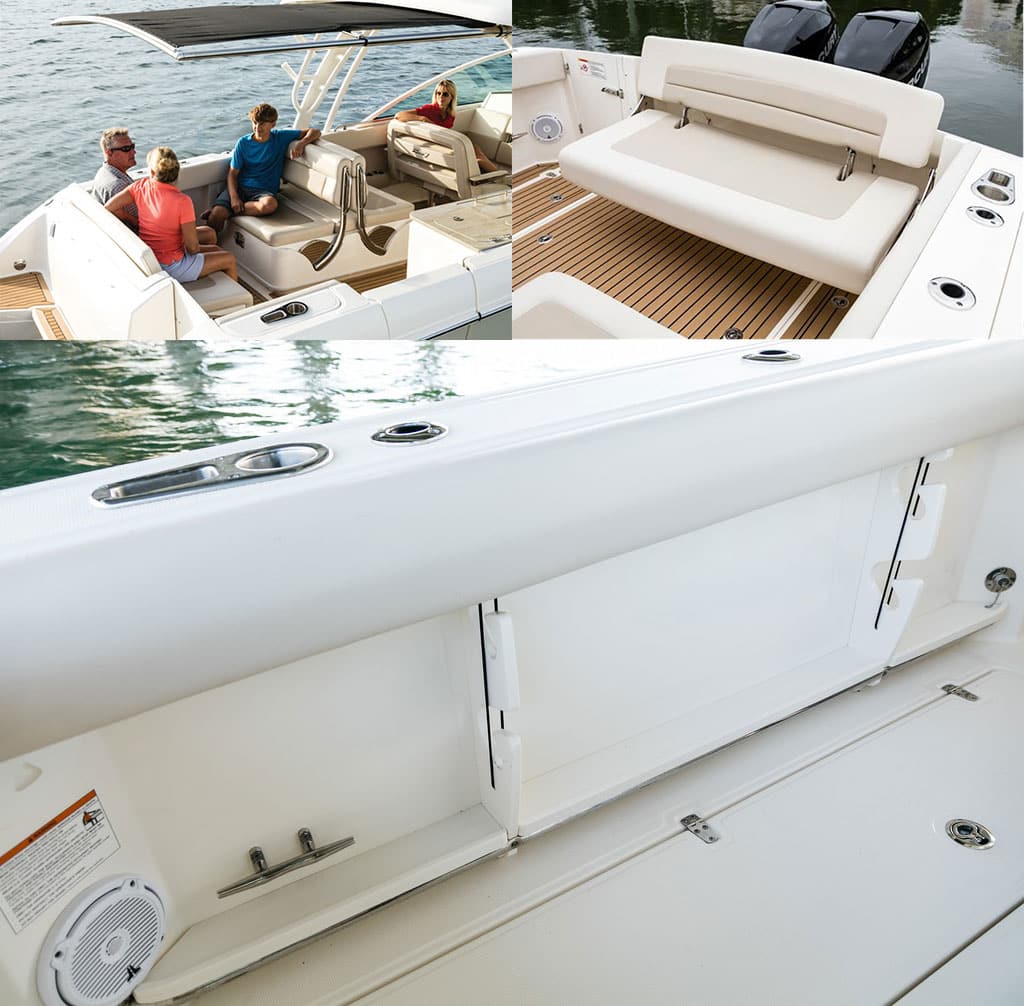
2008: Hardware Upgrade
Whaler never stopped improving its Unibond construction, but the builder did turn a sharply focused eye on the quality of its hardware. Engineers began designing new hinges latches, hawse pipes and more that were not only good-looking and functional but also as durable and long-lasting as the Unibond hull. Perhaps the pinnacle of Whaler’s in-house hardware revolution was the patented multipurpose tower created for the Dauntless family.

2008: Improved DNA
The year 23andMe invented the first retail DNA test, Boston Whaler continued down its evolutionary trail, improving its DNA with patents for an integrated bow-thruster design that first appeared on the Conquests and later on the Outrage, Vantage and Realm models. The benefit was profound, allowing Whaler to mold the support structure into the hull instead of cutting it in after construction. It was sturdy, sleek and effective, making thrusters more accessible to average boaters.

2013: The Luxury Ad-Vantage
Just when you might think Whaler had the optimum mix of pleasure-seeking machines, Virgin Galactic announced the development of its private enterprise tourist space shuttle, banking on the desire of wealthy tourists to plunk down $250,000 for a pleasure ride into space. Whaler’s approach to pampering its customer was the Vantage, an entirely new Whaler that retained the fishing DNA, sported Unibond construction, and wrapped the boater in day-cruising luxury that combines the best of dual consoles, bay boats and luxury bowriders. And boaters could own the Vantage forever for far less than a ticket on Virgin Galactic.
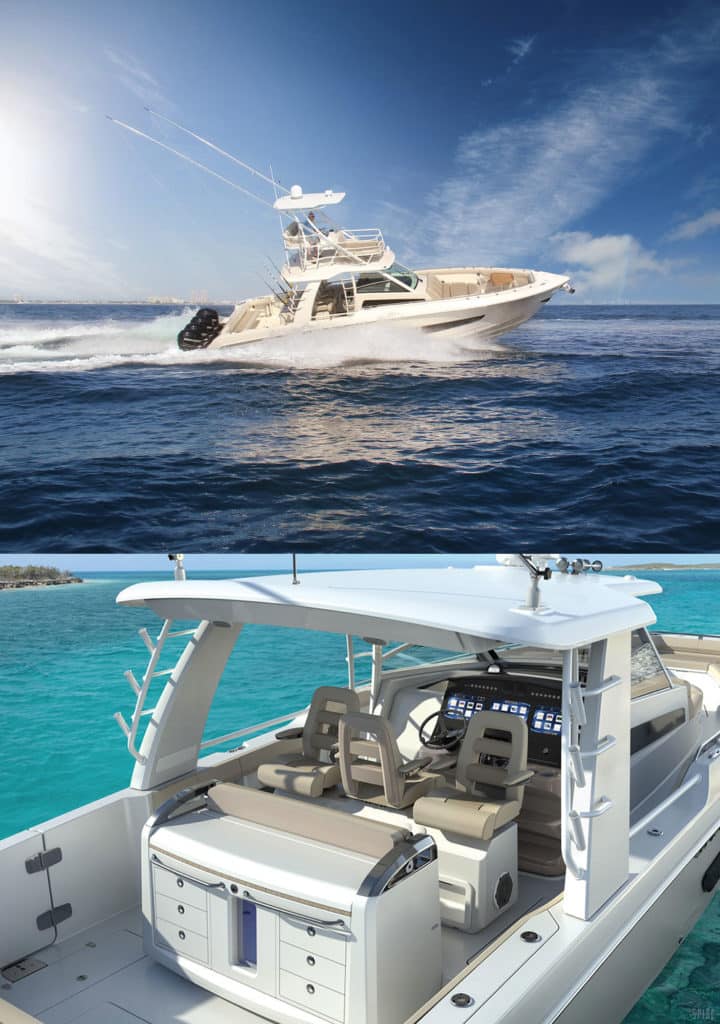
2014: The Biggest Yet
By 2014, people were so spoiled by ever-improving and evolving technology that they had become hard to impress. Apple met the challenge with the first smartwatch, a diminutive partner to iOS devices. Whaler took another approach to this technological march forward. The builder stretched its Outrage line to the first-ever 40-foot center-console and powered it with four electronically controlled Mercury 350 outboards. In so doing, the 420 Outrage changed the nature of outboard boating forever.

2014: From Tackle to Table
Not everything has to be bigger to be better. The hoverboard was introduced for personal fun the year Whaler brought in a 285 Conquest Walkaround for boaters and anglers. More than just fun, the Conquest brought sleeping arrangements for four, a head, shower and galley, and a patented concealable tackle work center to make captains tournament-ready. To make it even better, Whaler created a summer-kitchen option for boaters who are more into cooking than catching. Whaler also invented and patented a reversible seat, adding versatility and comfort.

2015: Bed in a Boat
Memory foam, Ambien, noise machines, weighted blankets, aromatherapy pillow sprays — American consumers can’t get enough sleep products. But for some, a real bed in a boat is the bigger dream, and Whaler patented a new forward berth system to help bring the most comfort to owners of the 345 Conquest. Instead of having to wrestle filler cushions and a platform to convert the dinette to a berth, the 345’s lounge cushions swing together in a scissorlike motion that completes a spacious sleeping area and leaves a walkway around it for easy access. Whaler further improved sleep quarters by creating a couch that can convert to a bunk, adding another place for a boater to lay his head.
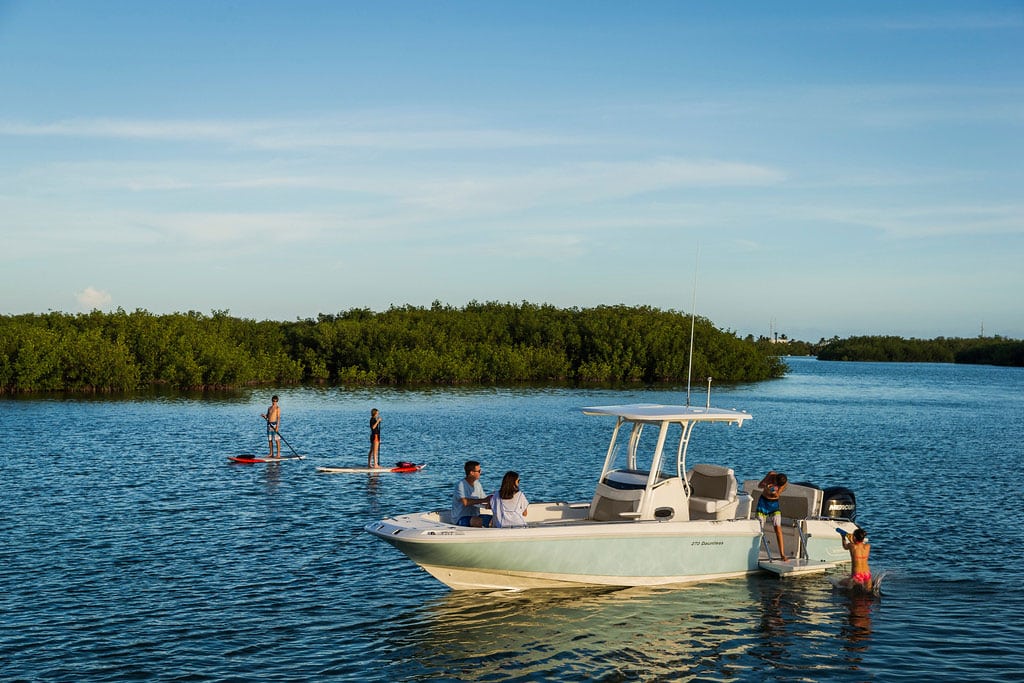
2015: Easy In, Easy Out
Like Apple computers, just when you think Whaler has reached the last station of product improvement, the builder tops it. Apple enhanced its iPad Pro with the Apple Pencil. With the 270 Dauntless, Whaler designed a dive door that converts to a patio and, remarkably, put it in the side of the vessel, not the stern, converting the muscle-straining experience of entering and leaving the water to something as intuitive as electronically signing your name.
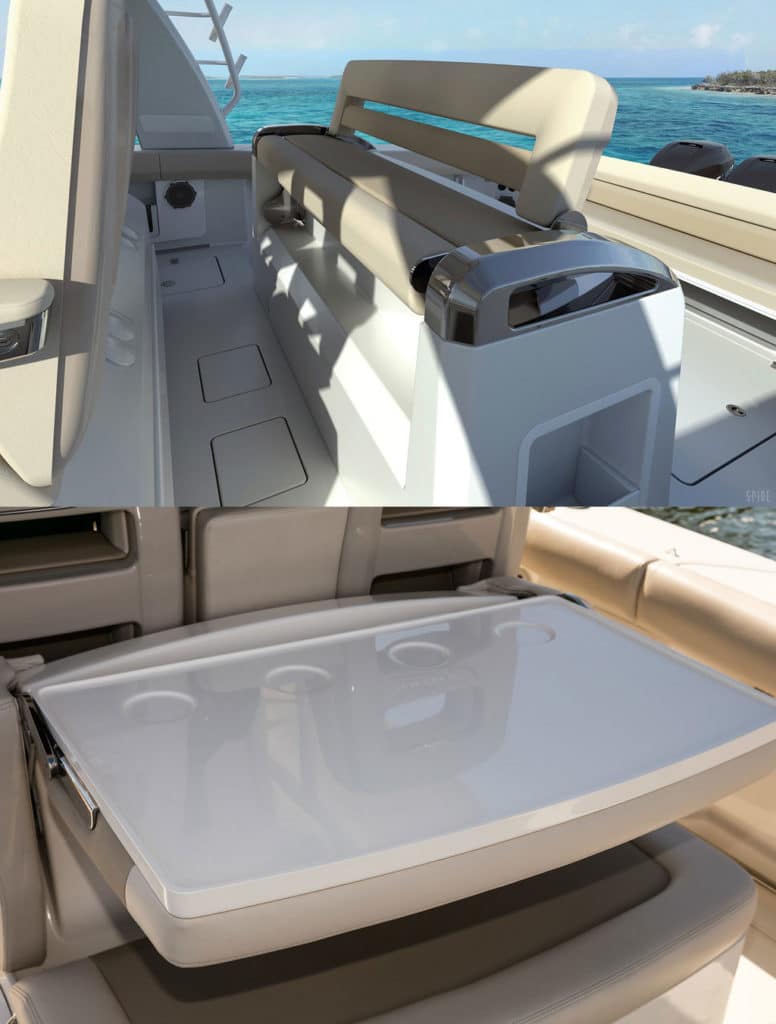
2017: The Transformer
LG released the 65-inch Signature TV, nicknamed “wallpaper” for its diminutive half-inch thickness and magnetic wall mounts, adding immersive entertainment without stealing space in the room. Whaler has a knack for inserting fun and utility in its boats without encroaching on much-needed people space. In the latest example, last year Whaler introduced new leaning-post seats for the 330 Outrage that left a wide-open cockpit behind spacious helm seating — but with a twist. The seat back can be folded out to create an ample workstation, easing rigging baits or preparing snacks. The system was so successful in creating value and saving space, Boston Whaler downsized it for the 230 Outrage, bringing more value to the more compact vessel.


